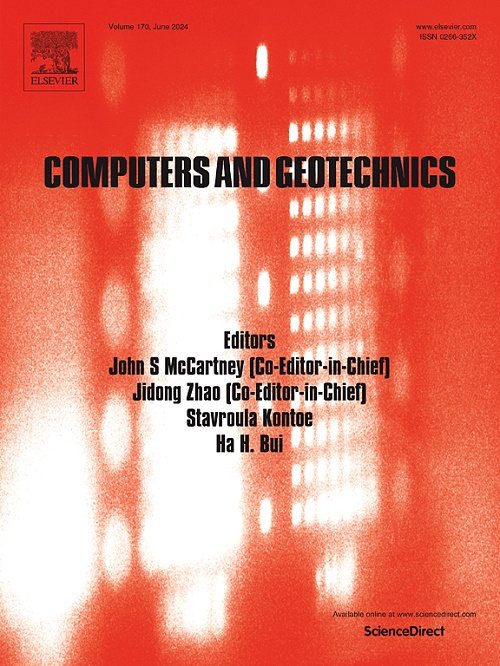A unified predictive approach for conical object penetration
IF 5.3
1区 工程技术
Q1 COMPUTER SCIENCE, INTERDISCIPLINARY APPLICATIONS
引用次数: 0
Abstract
This paper investigates the penetration of conical objects with varying apex angles in clayey soils, drawing inspiration from biological adaptations observed in nature. Using large deformation numerical modelling, a systematic series of analyses were conducted to explore the effects of apex angle, soil rigidity, interface roughness, and penetration depth on the penetration resistance to the conical base. The results were characterised using a dimensionless bearing factor, Nc, which was decomposed into a normal component Ncn and a shear component Ncs. The study revealed that Ncn is influenced by apex angle, interface roughness, soil rigidity and penetration depth while Ncs is predominantly dependent on apex angle and interface roughness. A unified predictive approach for soil resistance to the conical base was developed from the comprehensive analyses. A series of application case studies were conducted, exploring soil resistance to different conical footings in geotechnical engineering, following a brief demonstration of an example from the natural domain. By deepening the understanding of conical object penetration, this study offers insights for practical engineering solutions including potential bioinspired design.
求助全文
约1分钟内获得全文
求助全文
来源期刊

Computers and Geotechnics
地学-地球科学综合
CiteScore
9.10
自引率
15.10%
发文量
438
审稿时长
45 days
期刊介绍:
The use of computers is firmly established in geotechnical engineering and continues to grow rapidly in both engineering practice and academe. The development of advanced numerical techniques and constitutive modeling, in conjunction with rapid developments in computer hardware, enables problems to be tackled that were unthinkable even a few years ago. Computers and Geotechnics provides an up-to-date reference for engineers and researchers engaged in computer aided analysis and research in geotechnical engineering. The journal is intended for an expeditious dissemination of advanced computer applications across a broad range of geotechnical topics. Contributions on advances in numerical algorithms, computer implementation of new constitutive models and probabilistic methods are especially encouraged.
 求助内容:
求助内容: 应助结果提醒方式:
应助结果提醒方式:


